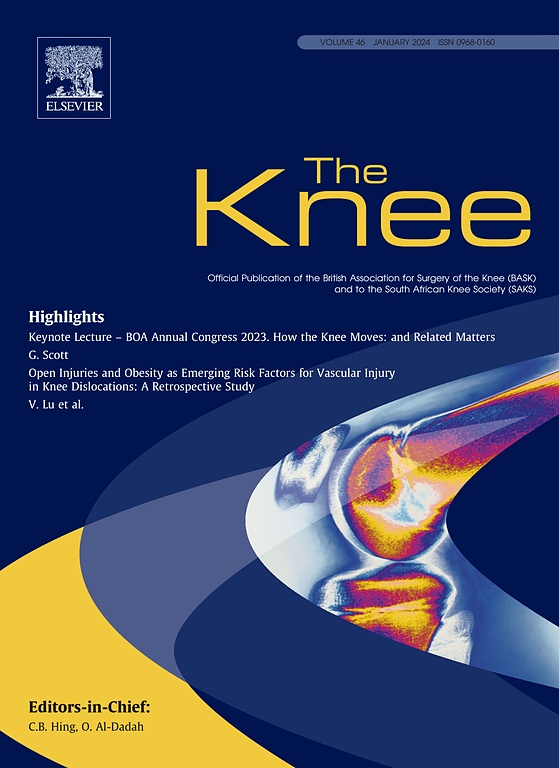
ACLR with lateral plasty may improve lateral compartment laxity in advanced chronic laxity

ACLR with lateral plasty may improve lateral compartment laxity in advanced chronic laxity
Patellar tendon autograft reconstruction of the anterior cruciate ligament with and without lateral plasty in advanced-stage chronic laxity. A clinical, prospective, randomized, single-blind study using passive dynamic X-rays
Knee. 2014 Jan;21(1):58-65. doi: 10.1016/j.knee.2013.06.001.Synopsis
120 patients with advanced chronic anterior laxity were randomized to receive ACL reconstruction (ACLR) with or without extra-articular ilio-tibial band tenodesis. The study aimed to examine ACLR outcomes and objective laxity when combined with lateral plasty. After 2 years, patients who underwent ACLR with lateral plasty experienced a greater improvement in anterior translation laxity of the late...
To view the full content, login to your account,
or start your 30-day FREE Trial today.
FREE TRIAL
LOGIN
Forgot Password?
Explore some of our unlocked ACE Reports below!

Learn about our AI Driven
High Impact Search Feature
Our AI driven High Impact metric calculates the impact an article will have by considering both the publishing journal and the content of the article itself. Built using the latest advances in natural language processing, OE High Impact predicts an article’s future number of citations better than impact factor alone.
Continue



 LOGIN
LOGIN

Join the Conversation
Please Login or Join to leave comments.